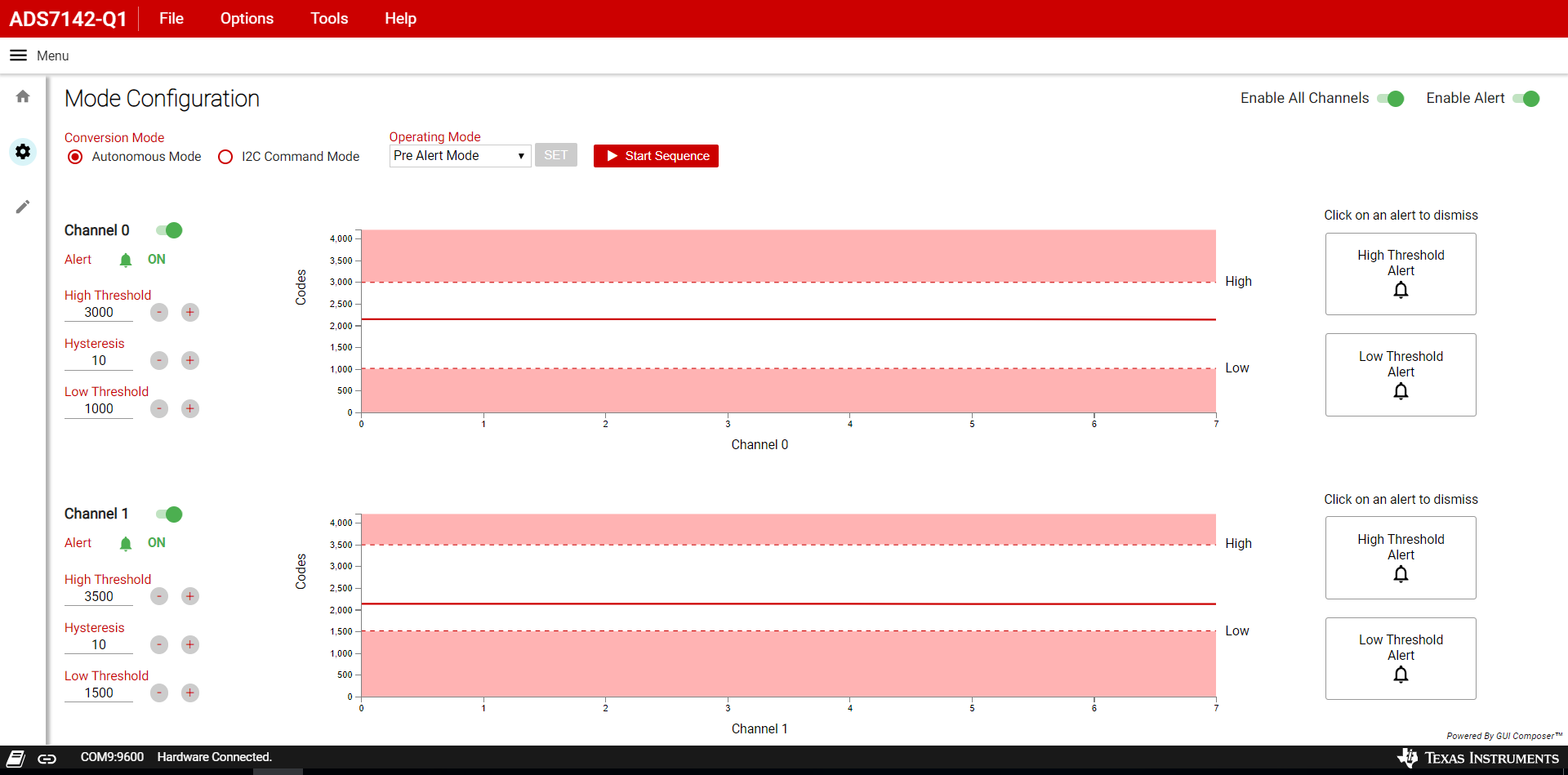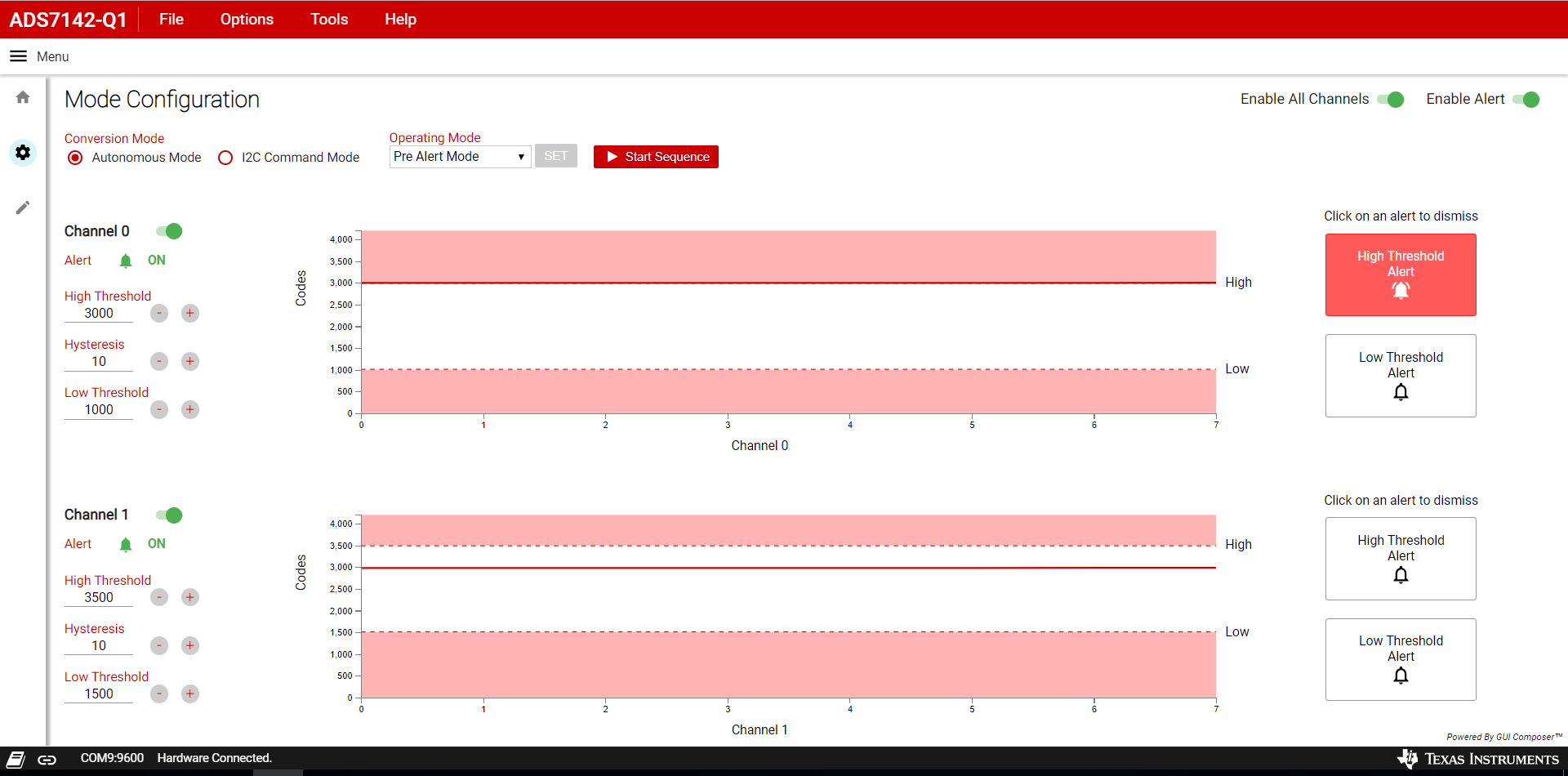SBAU321B November 2018 – June 2021 ADS7142 , ADS7142-Q1
4.1.3 Pre Alert Mode
When Pre Alert Mode is selected from the Operating Modes drop-down menu and the SET button is pressed, the device starts conversions and stores the data in the data buffer until the input signal crosses either the high or low threshold for the channels selected in the sequence. If the user aborts the sequence before the data buffer is filled, the device will abort the sequence and stop storing the conversion results. To understand the steps required to configure the device in this mode, refer to the ADS7142-Q1 data sheet.
Figure 4-3 shows the ADS7142-Q1 GUI configured in Pre Alert Mode with the Alert functionality enabled on channel 0. In this example, the High Threshold, Hysteresis, and Low Threshold are set. The thresholds are marked on the graph in pink and hysteresis is indicated by the dotted line.
 Figure 4-3 Operation in Pre Alert Mode
Figure 4-3 Operation in Pre Alert ModeFigure 4-4 shows the GUI after an Alert condition is encountered. In this example, Channel 0 has reached the High Threshold. This is indicated by the High Threshold indicator on the right side of the corresponding graph. Since the device is configured for Pre Alert Mode operation with both channels enabled, the conditions prior to reaching the Alert condition are displayed. The Alert condition must be cleared, by clicking on the Threshold indicator before the next sequence is run to ensure normal operation of the device.
 Figure 4-4 Operation After Alert Condition
Figure 4-4 Operation After Alert Condition